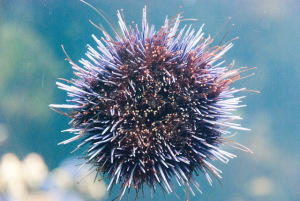New to science: November 2015
Posted on November 30, 2015 by Anand Jagatia
Each month, the Microbiology Society publishes the International Journal of Systematic and Evolutionary Microbiology, which details newly discovered species of bacteria, fungi and protists. Here are a few of the new species that have been discovered and the places they’ve been found. The full papers are available to journal subscribers, but the abstracts are free to read.

It’s the last day of November, which can only mean one thing – Christmas is just around
the corner. Whether this fills you with joy for the approaching festivities, or leaves you slightly bemused at how fast the year has gone, we’ve got a roundup of this month’s microbial discoveries just for you.
Scientists in Austria and Germany discovered two new strains of the genus Corynebacterium inside the noses of sick animals submitted to the Veterinary University in Vienna. The new species, C. tapiri and C. nasicanis, are named for the animals they were isolated from – a tapir and a dog, respectively. In another animal-related find, scientists in South Korea have found a novel species of microbe in a natural cave on Jeju Island. The strain, Rhodococcus antrifimi was isolated from dried bat dung (also known as guano).
Sea urchins are prickly underwater creatures that come in all colours, shapes and sizes. These animals, also known as sea hedgehogs, were the source of two new members of the phylum Bacteriodetes isolated by teams in Taiwan and Japan. Chryseobacterium echinoideorum came from sea urchins collected on Penghu Island, and Lutibacter holmesiiwas extracted from another species of sea urchin found in the Sea of Japan.
Elsewhere, in India, scientists studying the sludge from a dairy-waste treatment plant isolated and cultivated a peach-coloured colony of Rhodococcus bacteria, for which they propose the name R. lactis. Also looking at sludge, a team of Chinese researchers has discovered a new species of bacteria in a wastewater treatment plant that is able to degrade m-cresol (a phenolic compound found in creosote). The strain is named Lysinibacillus cresolivorans.
Lastly for this month, some very tiny microbes. Bacterial cells tend to be in the order of a few micrometres across – about 1/20th the width of a human hair – but some are much smaller. These cells, known as ultramicrobacteria, are around 0.2 micrometres wide. Scientists from Japan have isolated just such a species, and have aptly named it Aurantimicrobium minutum. The new species was discovered while the team was looking for bacteria that could pass through the very fine pore filters that are used for filtering microbes out of fluids.
